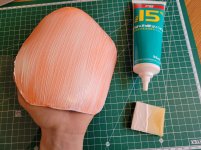Why does the glue go before the first layer of boost?
Also, are there any bounce test comparison videos of boosted vs non-boosted rubbers?
Oh my god I used to that all the time and always trying to find the perfect way of throwing the ball. I sadly didnt record anything although I have done like a hundred or more tests throwing balls from different heights.
So I found out that if u let a ball fall into the sweet spot of the blade, (sweet spot is in the center and 1 half/one ball up) from approximately 30-40 cm you can have a good understanding of whats goin on .
If u let the ball fall from much higher spots then you get unwanted results (not perfect vertical landing, sponge compressed also)
So after many experiments I found out that my hurricane is performing at its best when
the bounce test of 30cm gives me a rebound of 18 19 cm. The thing is that after the first week the rebound drops and this is one of the reasons i dropped playing with tacky rubbers cause if u want steady performance u have to boost all the time. To realize how much faster tensors are the tenergy gave me a rebound of 22-24.5 cm height
Now if the ball lands closer to the handle, even if boosted the chinese rubber bounces like dead but a tensor still gives you a solid bounce which is a good explanation of the statement "tacky rubbers are not forgiving"
hope I helped, bear in mind that the numbers provided are my own personal tests to give you an image about what's happening. I used many different boosting methods during the period I played with chinese rubber











